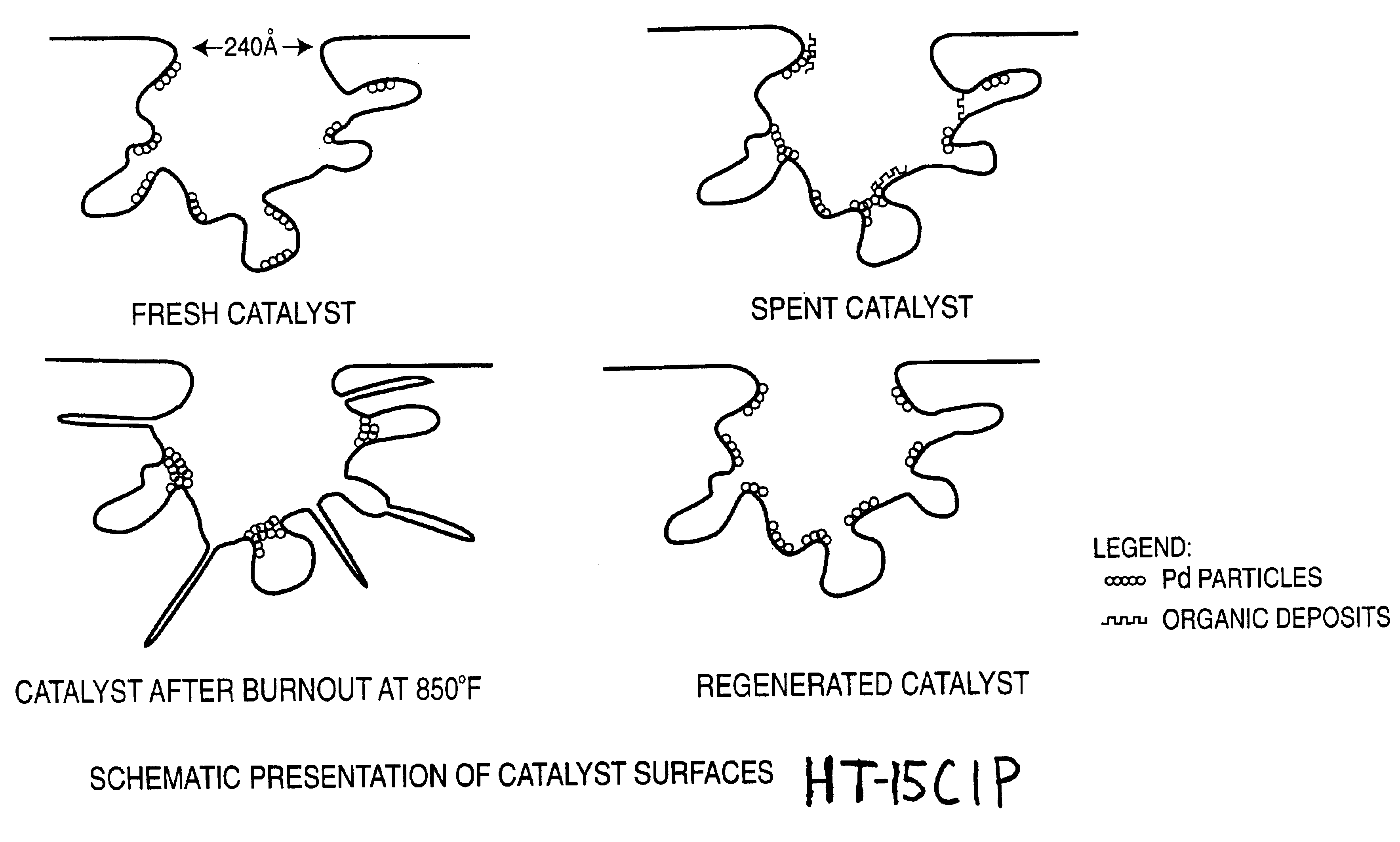Regeneration of spent supported metal catalysts
a technology of supported metal catalyst and catalyst surface, which is applied in the direction of physical/chemical process catalyst, other chemical processes, separation processes, etc., can solve the problems of difficult to successfully regenerate the used catalyst back to near 100% of its original activity, promote undesirable agglomeration of palladium to larger particles, etc., to achieve effective removal of contaminants and organic deposits, clean the surface of contaminated catalyst, and improve the effect of cleaning
- Summary
- Abstract
- Description
- Claims
- Application Information
AI Technical Summary
Benefits of technology
Problems solved by technology
Method used
Image
Examples
example
[0055]Samples of used supported palladium (Pd) on alumina catalyst, obtained from extended operations for hydrogenation of ethyl anthraquinone (EAQ) for producing hydrogen peroxide (H2O2) product, were regenerated utilizing the method of this invention. The used catalyst contained 0.2-0.4 wt. % palladium on alumina support. The used catalyst was first contacted with methanol solvent at 25° C. and ambient pressure for 3.3 hours, and then replaced with new methanol solvent three times with each time for 30 minutes (0.5 hour). Then the washed catalyst was dried in air at 110° C. for 2 hours, and then calcined in air at 400° C. for 4 hours. The calcined catalyst was then treated with glycolic acid agent at 400° C. and ambient pressure for 3 hours. The results obtained with the used catalyst that was regenerated by this procedure are shown in Table 1, and are depicted schematically in FIG. 1(d).
[0056]
TABLE 1Regeneration of Used Supported Palladium CatalystFreshUsedWash-BurnRegeneratedCat...
PUM
| Property | Measurement | Unit |
|---|---|---|
| pressure | aaaaa | aaaaa |
| temperature | aaaaa | aaaaa |
| time period | aaaaa | aaaaa |
Abstract
Description
Claims
Application Information
 Login to View More
Login to View More - R&D
- Intellectual Property
- Life Sciences
- Materials
- Tech Scout
- Unparalleled Data Quality
- Higher Quality Content
- 60% Fewer Hallucinations
Browse by: Latest US Patents, China's latest patents, Technical Efficacy Thesaurus, Application Domain, Technology Topic, Popular Technical Reports.
© 2025 PatSnap. All rights reserved.Legal|Privacy policy|Modern Slavery Act Transparency Statement|Sitemap|About US| Contact US: help@patsnap.com


